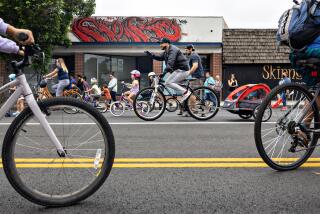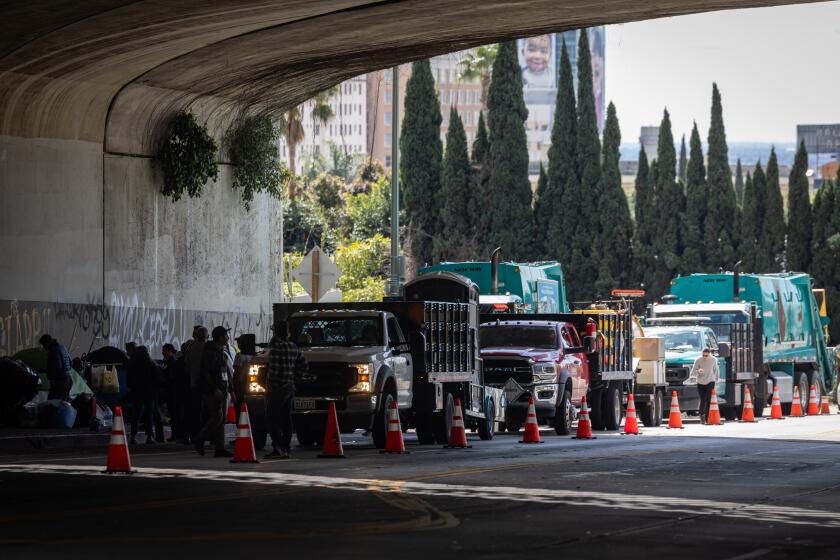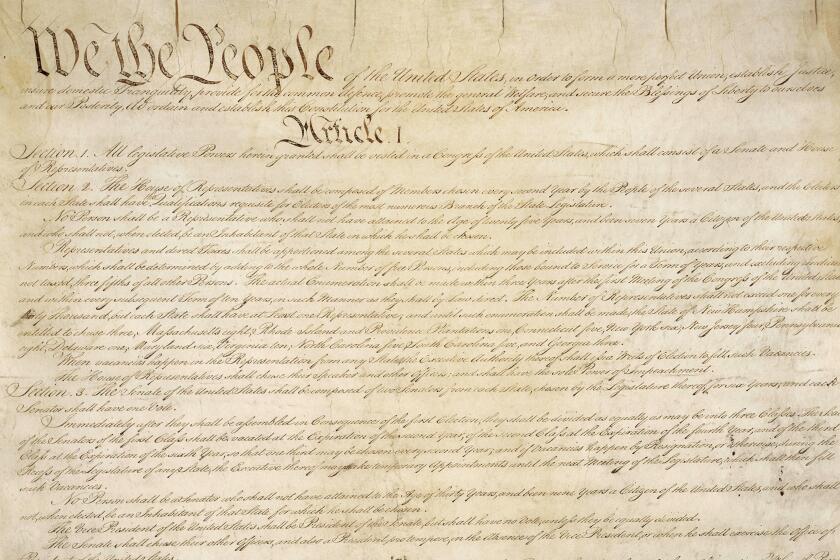Opinion: Hit-and-run heatmap highlights danger to cyclists, and perhaps callousness of drivers
“Are cyclists and drivers sharing the road,” the Times editorial page asked a year ago, “or are they locked in a struggle for street hegemony?”
It was a question the page explored through the Roadshare project, and of course there are many ways to answer it. One answer, though, came over Thanksgiving weekend in the remarkable story and heatmap detailing hit-and-run incidents.
The Times analysis and story by Armand Emamdjomeh, Laura J. Nelson and Joseph Serna shows that hit-and-runs involving cyclists in Los Angeles County increased 42% from 2002 to 2012, with more than 5,600 cyclists injured and at least 36 killed. The vast majority of cases are unresolved.
The research shows that hit-and-run collisions are not concentrated in any one part of the region, but are distributed pretty much wherever cars and bicycles share the road.
As more cyclists commute to and from work, it stands to reason, unfortunately, that there will be more collisions – but not necessarily that drivers involved in them will flee the scene. The driver mentioned in the story, who later turned herself in, is apparently an exception.
Leaving the scene of an accident in which someone was killed or seriously injured is a felony that carries a possible sentence of up to four years in prison and a $10,000 fine. Misdemeanor hit-and-runs are punishable by up to a year in jail and a $1,000 fine.
Roadshare took note of car-bike collisions from New York to London to San Francisco and said that the attitude of police departments is often that cyclists – well, perhaps not that they had it coming, but that the streets are a driver’s world, and if cyclists want to share it that’s well and good, but they are assuming the risk.
Even when the driver is caught, he or she often gets the benefit of the doubt. As Times letters editor Paul Thornton noted about a high-profile San Francisco case, even a videotape of a driver making a dangerous turn into a bike lane wasn’t enough for a prosecution.
“That the district attorney believed the video wasn’t enough to convince a jury of the driver’s negligence suggests a troubling perception about cycling: that death or severe injury is a natural outcome of such a risky activity,” Thornton wrote, “and those killed or maimed while doing it shouldn’t expect much of a response from law enforcement.”
It has often been noted that police officers drive patrol cars and cruisers, and thus see life from a driver’s point of view. Perhaps they should be required to spend at least six months on a bike.
Come to think of it, it might not be a bad idea for any driver in California to spend some time on a bike, to understand that sharing the road, rather than street hegemony, is a safer and more sensible way to go.
Follow me on Twitter @RGreene2
More to Read
A cure for the common opinion
Get thought-provoking perspectives with our weekly newsletter.
You may occasionally receive promotional content from the Los Angeles Times.







